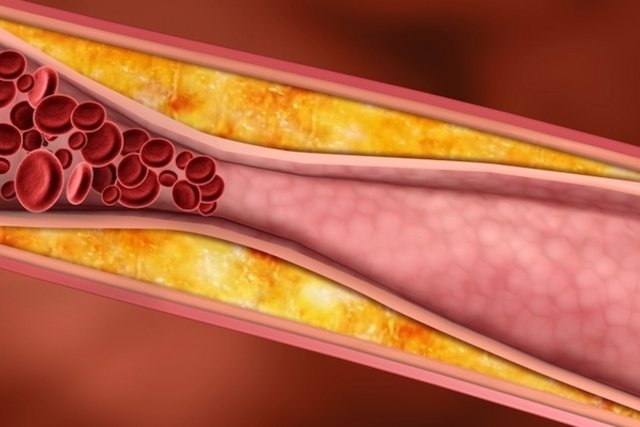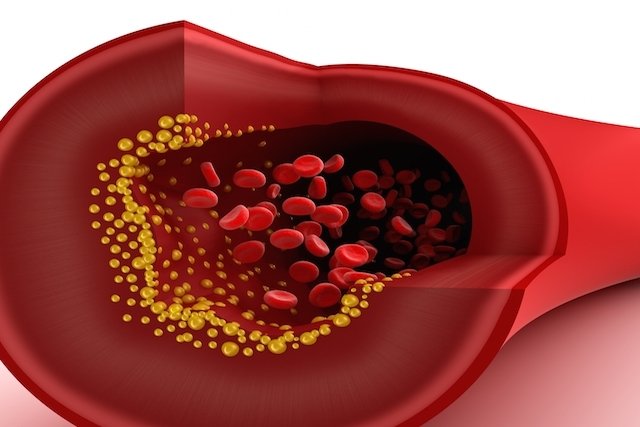Cholesterol is a type of fat that is essential for the proper functioning of the body. However, having high blood cholesterol levels is not always good and can even cause an increased risk of cardiovascular problems, such as heart attack or stroke.
To understand whether high cholesterol is bad or does not represent a problem, it is necessary to correctly interpret the blood test, as there are different types of cholesterol with different functions. HDL cholesterol is considered good, while LDL is known as bad cholesterol.
Therefore, if total cholesterol is high, but HDL cholesterol levels are higher than the recommended reference values, it does not normally indicate a high risk of disease, as excess cholesterol will be eliminated by the liver. However, if total cholesterol is high, but this is due to the presence of an LDL value higher than the reference values, excess cholesterol will be stored in cells and veins, instead of being eliminated, increasing the risk of cardiovascular problems.

Cholesterol calculator
Enter the results of your cholesterol test into the calculator below to find out if the values are within recommended levels:
Types of cholesterol
Cholesterol can be classified into some types:
- Colesterol HDL: it is known as the “good” type of cholesterol, as it is linked to a protein that transports it from the blood to the liver, where it is eliminated in the feces if there is excess;
- Colesterol LDL: is the popular “bad” cholesterol, which is linked to a protein that transports it from the liver to the cells and veins, where it ends up accumulating and can cause cardiovascular problems;
- Colesterol VLDL: it is cholesterol responsible for the transport of triglycerides.
Total cholesterol indicates the total amount of cholesterol in the blood, that is, the amount of HDL + LDL + VLDL cholesterol.
Colesterol HDL
HDL cholesterol is known as the “good” cholesterol, as it is capable of protecting the heart from damage caused by LDL and, therefore, is the only one that should be kept high in the bloodstream. It is produced by the body, being essential for the proper functioning of the body, so it is good to always have it above 40 mg/dl, ideally above 60 mg/dl.
When HDL values lower than 40 mg/dl are identified, it is important to pay attention, as it is a sign that LDL and/or triglycerides are increased, which represents a greater risk of developing cardiovascular diseases.
How to increase: to increase HDL cholesterol levels you must have a varied and healthy diet and practice regular exercise. Furthermore, it is also important to avoid risk factors such as smoking or drinking excessive alcohol.
Understand more about HDL cholesterol and how to increase its amount.
Do you have questions about your exam results?
Colesterol LDL
LDL cholesterol is “bad” cholesterol. It is considered high when it is equal to or greater than 130 mg/dL for most people, however, in some cases, stricter controls are necessary, especially if the person has had a cardiovascular problem in the past or has some other risk factor. risk such as being a smoker, being overweight or not exercising.
When the level of LDL cholesterol is high, fat begins to be deposited on the walls of the blood vessels, forming fatty plaques that, over time, can make it difficult for blood to pass through and lead to a heart attack or stroke, for example.
How to decrease: to reduce LDL cholesterol in the blood, you must follow a diet low in sugar and fat and practice some physical activity at least 3 times a week. However, when these actions alone are not enough, the doctor may recommend the use of medication to reduce levels. Find out more about LDL cholesterol and ways to reduce it.
Recommended maximum values for LDL cholesterol
The LDL value should always be as low as possible and that is why, for the general population, LDL should be kept below 130 mg/dl. However, people who are at high risk of having a cardiovascular problem benefit from having even lower LDL levels.
Therefore, the maximum values for LDL vary according to each person’s cardiovascular risk:
Cardiovascular risk must be determined by the cardiologist during the consultation after observing the necessary tests and clinical evaluation. Normally, people with a sedentary lifestyle, who do not eat properly, who are overweight and who have other risk factors such as smoking or drinking alcohol, have a high cardiovascular risk and, therefore, must have a low LDL. .
Another simpler way to calculate cardiovascular risk is to calculate the waist-to-hip ratio. Although this list can be done at home to get an idea of cardiovascular risk, a consultation with a cardiologist should not be postponed, as it is necessary to carry out a more detailed assessment.
Calculate your cardiovascular risk here using the waist-to-hip ratio:
Colesterol VLDL
VLDL cholesterol is responsible for transporting triglycerides and also increases the risk of heart disease. The ideal VLDL value is up to 30 mg/dl and high when it is above 40 mg/dl. If the result of the exam is between these references, the exam is considered normal, but it is not ideal, as it can increase the risk of cardiovascular diseases.
However, in the latest recommendations from the Brazilian cardiology society, VLDL values are not considered relevant, with non-HDL cholesterol values being more important, the target of which should be 30 mg/dl above LDL.
Colesterol total
Total cholesterol is the sum of HDL, LDL and VLDL. Having high total cholesterol represents a high risk of cardiovascular disease and, therefore, its values should not exceed 190 mg/dl.
Total cholesterol above 190 is less of a concern if LDL values are normal, but the person should take care, such as reducing their intake of foods high in fat, to prevent cholesterol from becoming too high and damaging to health.

Sign up for our newsletter and stay up to date with exclusive news
that can transform your routine!
Warning: Undefined array key "title" in /home/storelat/public_html/wp-content/plugins/link-whisper-premium/templates/frontend/related-posts.php on line 12
Warning: Undefined array key "title_tag" in /home/storelat/public_html/wp-content/plugins/link-whisper-premium/templates/frontend/related-posts.php on line 13




